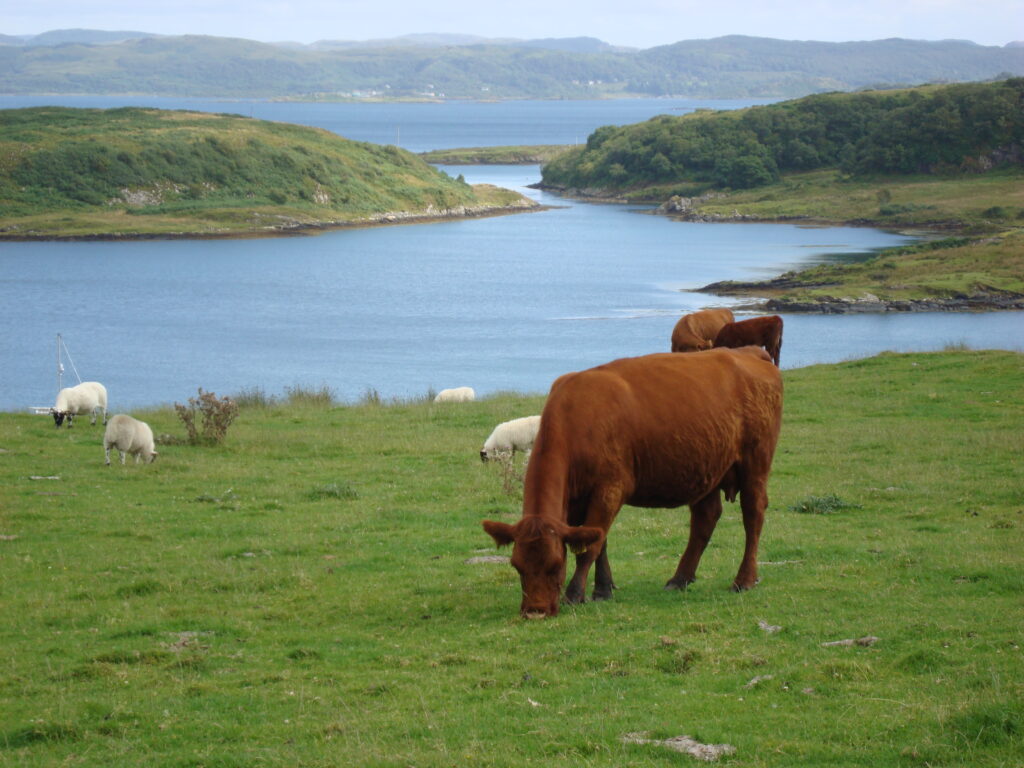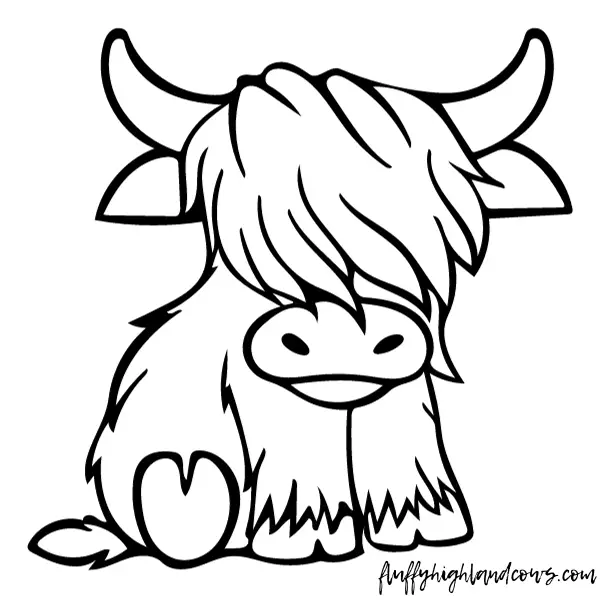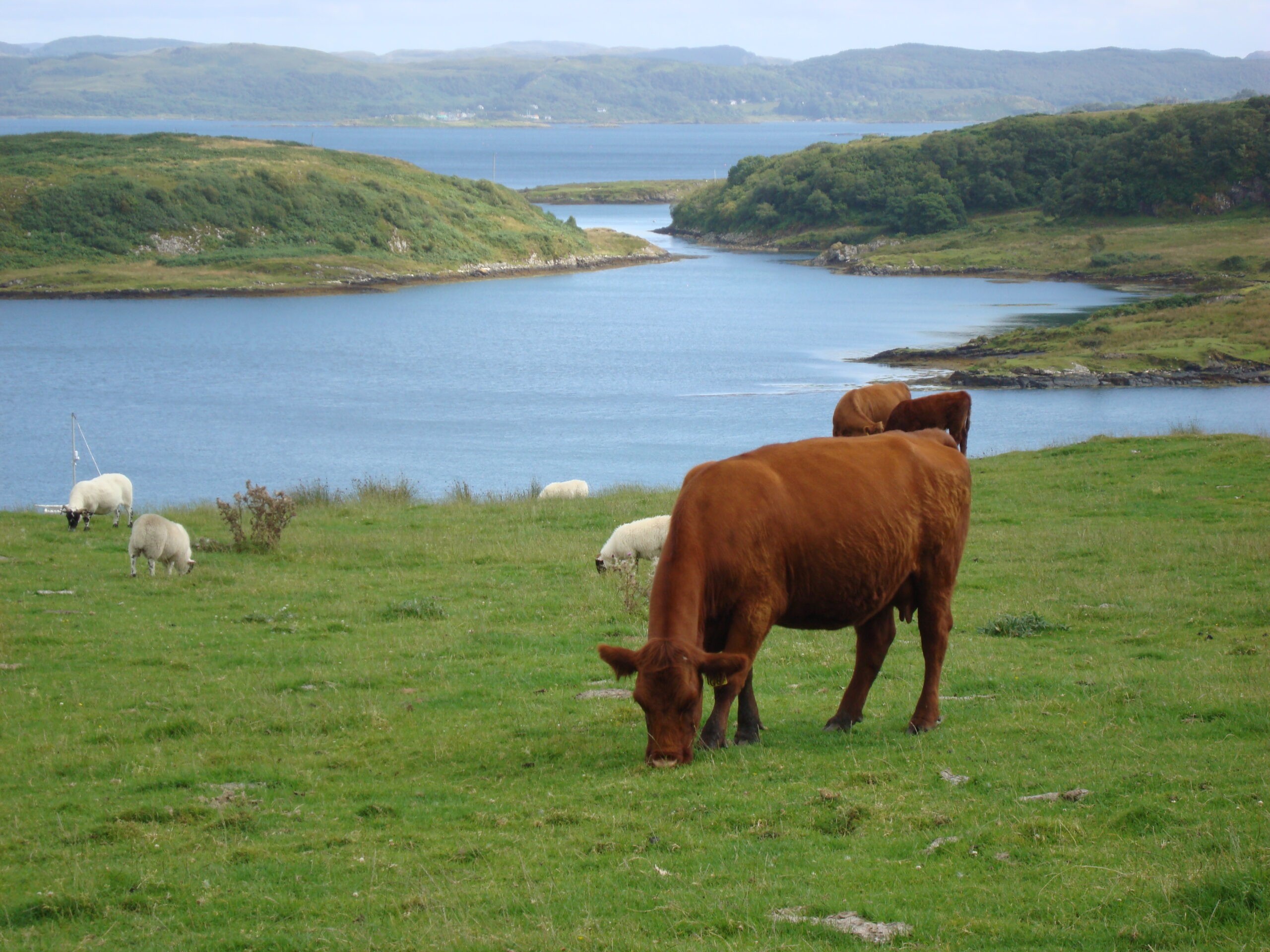Luing Cattle: The Robust Breed of the Scottish Isles
Luing cattle, a breed developed relatively recently in the 1940s, have quickly established themselves as a hardy and efficient choice for beef production. Originating from the Isle of Luing in Scotland, these cattle are known for their resilience, excellent meat quality, and adaptability.
This article explores the history, characteristics, and significance of Luing cattle in modern farming, incorporating additional unique traits.

Historical Background
The Luing breed was developed by the Cadzow brothers on the Isle of Luing, off the west coast of Scotland. Their goal was to create a cattle breed that could withstand the harsh Scottish climate while producing high-quality beef. They achieved this by crossing Beef Shorthorn cows with Highland bulls.
Officially recognized in 1965, the Luing breed represents a successful blend of two established breeds, combining the meat quality of the Shorthorns with the ruggedness of the Highlands.
Physical Characteristics
Luing cattle are medium to large in size, with cows typically weighing around 1,200 to 1,400 pounds and bulls around 2,000 pounds.
They are known for their thick, weather-resistant hides, which can be red, golden, white, or a combination of these colors. This heavy winter coat sheds easily in summer, adapting to seasonal changes.
The breed is naturally polled (hornless), a trait that enhances their ease of handling and safety.
Temperament and Adaptability
Luing cattle are celebrated for their docile temperament, making them easy to manage. They are highly adaptable, thriving in various environmental conditions, and are particularly efficient at converting rough foraging into high-quality meat.
Their ability to prosper under adverse weather conditions is widely renowned, making them a robust choice for diverse farming environments.
Meat Quality and Production
The meat of Luing cattle combines the best qualities of their Shorthorn and Highland ancestors. It is well-marbled and flavorful, often compared favorably to other beef breeds.
The breed’s natural efficiency in meat production, even in challenging grazing conditions, makes them a cost-effective and sustainable option for beef producers.
Role in Sustainable Farming
In sustainable agriculture, Luing cattle are an asset due to their ability to thrive on marginal lands and convert low-quality forage into quality meat.
Their contribution to biodiversity and land management aligns with sustainable farming practices, making them valuable for eco-friendly beef production.
Comparison to Highland Cattle
This table highlights the key similarities and differences between Highland cows and Luing cattle. While both breeds are known for their hardiness and meat quality, they differ in their origins, development history, and some physical characteristics. Both breeds, however, play a significant role in sustainable farming practices.
| Feature | Highland Cows | Luing Cattle |
| Origin | Scottish Highlands | Isle of Luing, Scotland |
| Development | Ancient breed with a long history | Developed in the 1940s, recognized in 1965 |
| Size | Medium to large; bulls around 1,800 lbs, cows around 1,100 lbs | Medium to large; bulls around 2,000 lbs, cows around 1,200 to 1,400 lbs |
| Coat | Long, flowing hair with a thick, woolly undercoat | Thick coat, often reddish-brown, adapted for harsh climates |
| Color Varieties | Commonly reddish-brown, but can vary | Typically reddish-brown, can vary |
| Temperament | Generally docile and easy to handle | Known for being docile and easy to manage |
| Climate Adaptability | Highly adaptable to harsh, cold climates due to thick coat | Hardy and adaptable, originally bred for harsh Scottish climate |
| Meat Quality | Lean, flavorful, and tender; known for high-quality beef | Well-marbled and flavorful, combining qualities of Beef Shorthorn and Highland cattle |
| Sustainable Farming | Suitable for sustainable farming due to low maintenance and ability to graze on rough terrain | Valued for efficiency in converting forage into high-quality meat, suitable for sustainable farming |
| Horns | Typically horned | Naturally polled (hornless) |
| Special Characteristics | Iconic appearance and cultural significance in Scotland | Bred for commercial beef production, efficient and fertile mothers |
Development of Luing Cattle: The Luing breed was indeed developed by crossing Beef Shorthorn bulls with Highland cows. This crossbreeding aimed to combine the hardiness and longevity of Highland cattle with the fleshing qualities of the Beef Shorthorn.
Fertility and Longevity: Luing cattle are known for their fertility and inherit the exceptional longevity of their Highland ancestors. They are regular breeders, with cows often averaging at least nine calves in their lifetime.
Meat Quality: Both breeds are raised primarily for beef. Highland cattle meat tends to be leaner due to their thick, shaggy hair providing insulation. Luing cattle, as a result of their crossbreeding, also produce high-quality beef.
Adaptability: Both breeds are well-adapted to harsh environments. Luing cattle, in particular, have inherited the ruggedness and hardiness of Highland cattle, making them suitable for challenging farming conditions.
Luing Cattle – A Long Hair Cow Breed
Luing cattle, with their robust nature, excellent beef production capabilities, and adaptability, have proven to be a valuable addition to the world of cattle breeds. Their development is a testament to the success of selective breeding in achieving specific agricultural goals.
As the agriculture industry continues to evolve towards more sustainable practices, Luing cattle stand out as a breed that not only meets the demands of modern beef production but also contributes positively to environmental stewardship.

